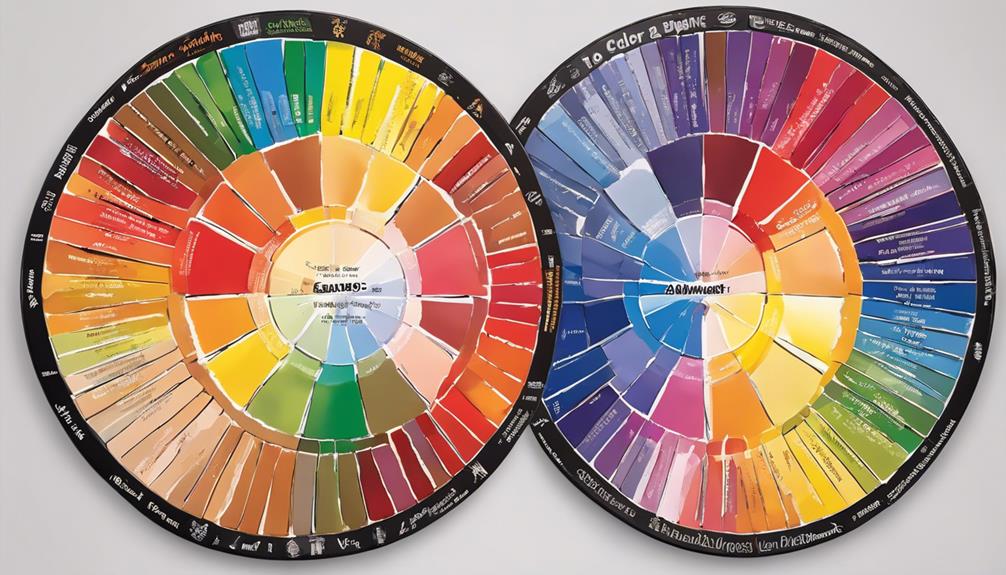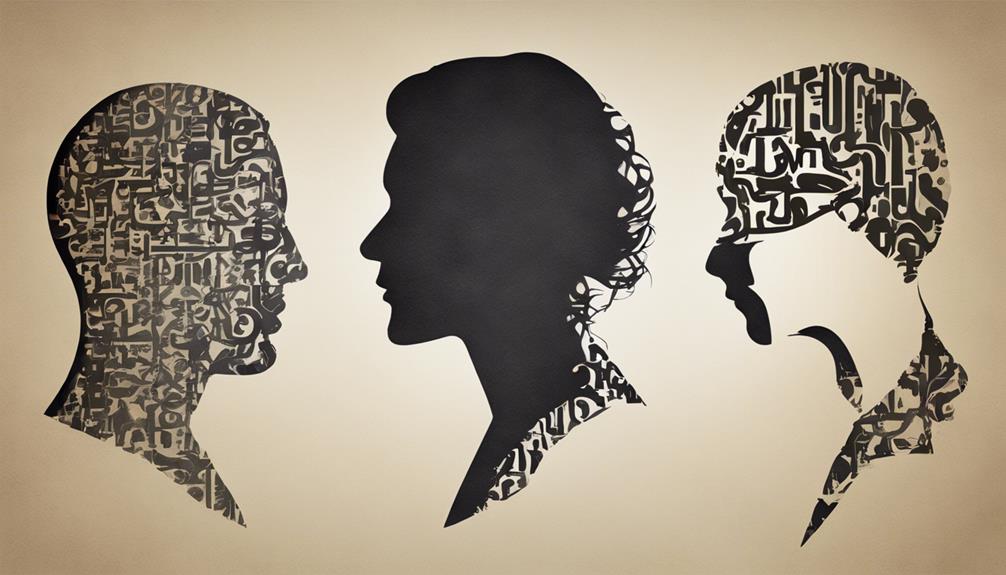During stressful times, our mental and physical selves might be overrun with tension, finding comfort in straightforward but potent methods is crucial.
But what if we told you there are seven self-soothing methods that could provide comfort and relief in those challenging situations?
These strategies are not only accessible but also customizable to suit your personal preferences, offering a diverse toolkit for navigating stressors.
Mastering these techniques might just be the self-care arsenal you never knew you needed.
Key Takeaways
- Deep breathing and muscle relaxation techniques calm the mind and body, reducing stress and promoting relaxation.
- Visualization and positive affirmations shift focus from stressors, fostering emotional well-being and self-compassion.
- Mindful meditation and sensory distractions help ground in the present moment, easing anxiety and promoting inner calm.
- These techniques offer practical ways to comfort yourself in stressful situations, enhancing overall well-being and resilience.
Deep Breathing
Deep breathing is a powerful technique that we can use to calm our minds and bodies in stressful situations. When we engage in deep breathing, we trigger the body's relaxation response, which aids in reducing stress and anxiety levels. This practice involves taking slow, deep breaths to soothe the nervous system and enhance the flow of oxygen throughout the body. By doing so, we can observe a decrease in heart rate and blood pressure, fostering a profound sense of tranquility within ourselves.
Moreover, deep breathing plays a crucial role in emotional regulation by shifting our focus away from distressing thoughts and towards the present moment. Through consistent practice, we can cultivate a greater sense of well-being and mental clarity. By integrating deep breathing into our daily routines, we empower ourselves to better manage the challenges that come our way, ultimately promoting a healthier and more balanced lifestyle.
Progressive Muscle Relaxation

Let's talk about how Progressive Muscle Relaxation can help us release muscle tension and achieve relaxation through our muscles.
This technique involves systematically tensing and then relaxing different muscle groups, helping us become more aware of and ease physical stress.
Muscle Tension Release
Engaging in Progressive Muscle Relaxation (PMR) can effectively alleviate muscle tension and promote relaxation during stressful situations.
PMR, a proven relaxation technique, involves tensing and then relaxing different muscle groups to release tension and enhance body awareness.
By practicing PMR regularly, individuals can reduce stress, anxiety, and physical discomfort while fostering a sense of calm.
This accessible therapy intervention can be performed anywhere, offering quick stress relief whenever needed.
Studies have shown that PMR not only lowers blood pressure but also improves sleep quality, leading to an overall enhancement in well-being.
Whether integrated into therapy sessions, mindfulness practices, or stress management programs, PMR serves as a valuable tool for individuals seeking to unwind and relax from the pressures of daily life.
Relaxation Through Muscles
When seeking to unwind and alleviate stress, incorporating Progressive Muscle Relaxation (PMR) into your daily routine can be a beneficial practice. PMR is a technique where you tense and then relax different muscle groups to reduce stress and promote relaxation.
This relaxation technique helps release physical tension, making it effective for managing anxiety, insomnia, and chronic pain. Regular practice of PMR has been shown to improve sleep quality, decrease anxiety levels, and enhance overall well-being.
Therapists and healthcare professionals often recommend PMR as an evidence-based relaxation technique for stress management. Spending 10-20 minutes daily engaging in PMR can help you unwind, improve muscle awareness, and foster a sense of calmness.
Visualization Techniques
When it comes to managing stress, visualization techniques can be a powerful tool for promoting relaxation and emotional well-being.
By engaging in guided imagery, we can tap into the benefits of picturing peaceful scenes that help calm the mind and reduce anxiety.
Incorporating visualization practices into our routine can support our efforts in finding moments of tranquility and inner peace amidst life's challenges.
Guided Imagery Benefits
Using the power of visualization techniques, we can tap into the calming benefits of guided imagery to reduce stress and promote relaxation effectively. Guided imagery is a powerful tool that offers various advantages:
- Reducing stress and anxiety levels by creating calming mental images.
- Lowering heart rate, blood pressure, and cortisol levels to promote relaxation.
- Enhancing emotional regulation, improving focus, and fostering a sense of inner peace and well-being.
This technique is commonly utilized in therapy, meditation, and mindfulness practices to provide comfort during challenging times. By incorporating guided imagery into your self-soothing routine, you can harness its potential to manage stress and enhance your overall well-being significantly.
Imagining Peaceful Scenes
To enhance relaxation and reduce stress levels effectively, visualizing peaceful scenes through guided imagery is a powerful technique that can activate calming brain regions and promote a sense of tranquility. By creating detailed mental images of serene environments, such as a peaceful beach or a tranquil forest, we can lower our heart rate, decrease muscle tension, and shift our focus away from stressors.
Research indicates that visualization techniques not only mimic the brain activity of actually experiencing calm situations but also aid in emotional regulation and overall well-being. Engaging in regular visualization practices can be a valuable self-soothing tool, offering a mental escape to a comforting place whenever and wherever needed.
Visualization for Relaxation
Let's explore how visualization techniques can effectively promote relaxation and reduce stress levels. Visualization involves creating detailed mental images to evoke a sense of tranquility and inner peace. Here are three key points about visualization for relaxation:
- Reduction of Stress: Visualization can lower heart rate and decrease anxiety, offering a powerful method for self-soothing during stressful situations.
- Enhanced Well-Being: Regular practice of visualization can enhance overall well-being by improving focus, boosting positive emotions, and increasing self-confidence.
- Promotion of Inner Peace: Imagining calming scenes like a peaceful beach or serene forest can help in achieving a state of mental tranquility and inner peace.
Positive Affirmations

When facing challenging situations, incorporating positive affirmations into your daily routine can significantly enhance your mental well-being and resilience. Positive affirmations help reframe negative thoughts, promoting self-compassion and boosting self-esteem while reducing stress levels. Research suggests that regularly practicing positive affirmations can enhance self-confidence and resilience, leading to decreased anxiety and increased feelings of empowerment. By focusing on positive self-talk, individuals cultivate a more optimistic and resilient mindset.
| Benefits of Positive Affirmations |
|---|
| Promotes self-compassion |
| Boosts self-esteem |
| Reduces stress levels |
| Enhances mental well-being |
Incorporating positive affirmations into your daily routine can be a powerful tool to combat negative self-talk and improve your overall mental health. By repeating affirmations that resonate with you, you can cultivate a more positive outlook and build resilience in the face of adversity. Remember, practicing self-compassion and positive affirmations is a journey, so be patient with yourself as you work towards greater mental well-being.
Sensory Distraction

In moments of stress and overwhelm, utilizing sensory distraction techniques can provide a valuable respite by redirecting our focus towards external stimuli. When feeling overwhelmed, engaging in sensory experiences like physical touch, smell, or taste can help ground us in the present moment, offering a welcomed break from distressing thoughts.
Visualization techniques, such as imagining a peaceful place or scene, create a calming sensory experience that promotes relaxation. Additionally, using colors or visual distractions can effectively redirect our focus, aiding in managing anxiety and reducing arousal levels.
These sensory distractions not only offer a moment of reprieve from overwhelming emotions but also serve as powerful tools in our stress management arsenal. By incorporating these techniques into our daily routine, we can cultivate a sense of grounding and inner peace even in the midst of chaos.
Mindful Meditation

Engaging in mindful meditation cultivates a sense of inner calm and presence by focusing on the present moment without judgment or attachment to thoughts or emotions. Research indicates that regular practice of mindful meditation can significantly reduce stress, anxiety, and symptoms of depression. Through techniques like body scans, loving-kindness meditation, and breath awareness, individuals can enhance self-awareness, emotional regulation, and overall well-being.
By incorporating mindful meditation into your daily routine, you can learn to observe your thoughts and feelings without becoming overwhelmed by them. This practice allows you to acknowledge stressors or anxieties without letting them dictate your emotional state. Instead, you can respond to challenges with a greater sense of clarity and composure.
Whether you're at home, work, or anywhere else, taking a few moments to engage in mindful meditation can provide a powerful tool for self-soothing and stress relief. Prioritizing this practice can lead to a profound impact on your mental and emotional resilience.
Guided Imagery

Transitioning from mindful meditation to guided imagery seamlessly introduces a new approach to self-soothing by tapping into the power of visualizing calming and peaceful scenes in intricate detail. Guided imagery is a relaxation technique that utilizes the mind's ability to create vivid mental images, aiding in stress reduction and emotional regulation. By engaging in this visualization practice, individuals can transport themselves to serene environments, providing a mental escape from overwhelming situations.
Here are ways guided imagery can benefit you:
- Enhances relaxation by immersing you in tranquil mental landscapes.
- Promotes stress reduction through positive visualization exercises.
- Supports emotional regulation by creating a safe mental sanctuary for introspection.
Research indicates that incorporating guided imagery into therapy, meditation, or mindfulness practices can lead to decreased heart rate, lower blood pressure, and reduced cortisol levels. Embrace the therapeutic power of guided imagery to cultivate inner peace and well-being amidst life's challenges.
Frequently Asked Questions
How Do I Comfort Myself Emotionally?
When we comfort ourselves emotionally, we can turn to various techniques like deep breathing, positive self-talk, journaling, and mindfulness. These practices help us manage stress and anxiety, providing comfort and reassurance during tough times.
How Do You Self Soothe Trauma Response?
When dealing with trauma responses, we find that self-soothing is crucial. Grounding techniques, deep breathing, and physical methods like self-hugging can help regulate emotions.
Seeking guidance from a trained therapist and creating a self-soothing toolkit are effective strategies. Remember, self-soothing is a personal journey, and finding what works best for you is key to managing trauma responses successfully.
How Do You Soothe Yourself When Upset?
When upset, we find comfort in various self-soothing techniques. Breathing exercises, grounding techniques, positive affirmations, journaling, and sensory activities help us manage overwhelming emotions.
We prioritize self-care to regain emotional balance and clarity. It's essential to practice these techniques regularly to build resilience and cope effectively with stress.
How Can I Soothe Myself From Anxiety?
When anxiety strikes, we find relief through:
- Deep breathing exercises
- Progressive muscle relaxation
- Mindfulness meditation
- Visualization
- Self-compassion
- Positive self-talk
These self-soothing techniques help us manage anxiety by promoting relaxation, awareness, and comfort.
For instance, taking slow deep breaths while focusing on the present moment can calm our minds and bodies.
Incorporating these practices into our routine empowers us to navigate stressful situations with resilience and grace.
Are Self-Soothing Techniques Helpful in Overcoming People-Pleasing Behavior?
Self-soothing techniques are effective strategies to stop people-pleasing behavior. By practicing self-care and setting healthy boundaries, individuals can overcome the need to constantly seek approval from others. Taking time to prioritize one’s own well-being and learning to say no are essential steps in breaking this pattern.
How Can Self-Soothing Techniques Help in Understanding and Managing Personality Traits?
Self-soothing techniques can help you unlock your personality traits by allowing you to better understand and manage them. Techniques such as deep breathing, visualization, and mindfulness can provide insight into your emotions and behaviors, leading to improved self-awareness and control over your unique personality traits.
Conclusion
In conclusion, remember to practice these self-soothing techniques regularly to comfort yourself in stressful situations. It may seem ironic that finding peace can involve intentional effort, but the benefits are worth it.
By incorporating these strategies into your daily routine, you can build resilience and manage anxiety effectively. Remember, self-care isn't selfish – it's essential for your well-being. Keep soothing yourself, you deserve it.
Felicity, our Author, pens in-depth articles and guides that delve into the heart of personal discovery. Her narrative-driven approach weaves together theory, practice, and personal anecdotes, making the journey of self-exploration both relatable and inspiring. Felicity’s contributions help illuminate the path for those seeking a deeper understanding of themselves and their relationships.










